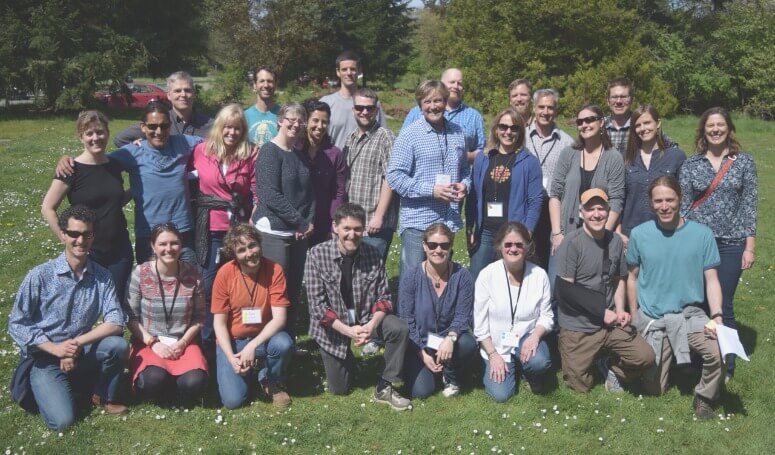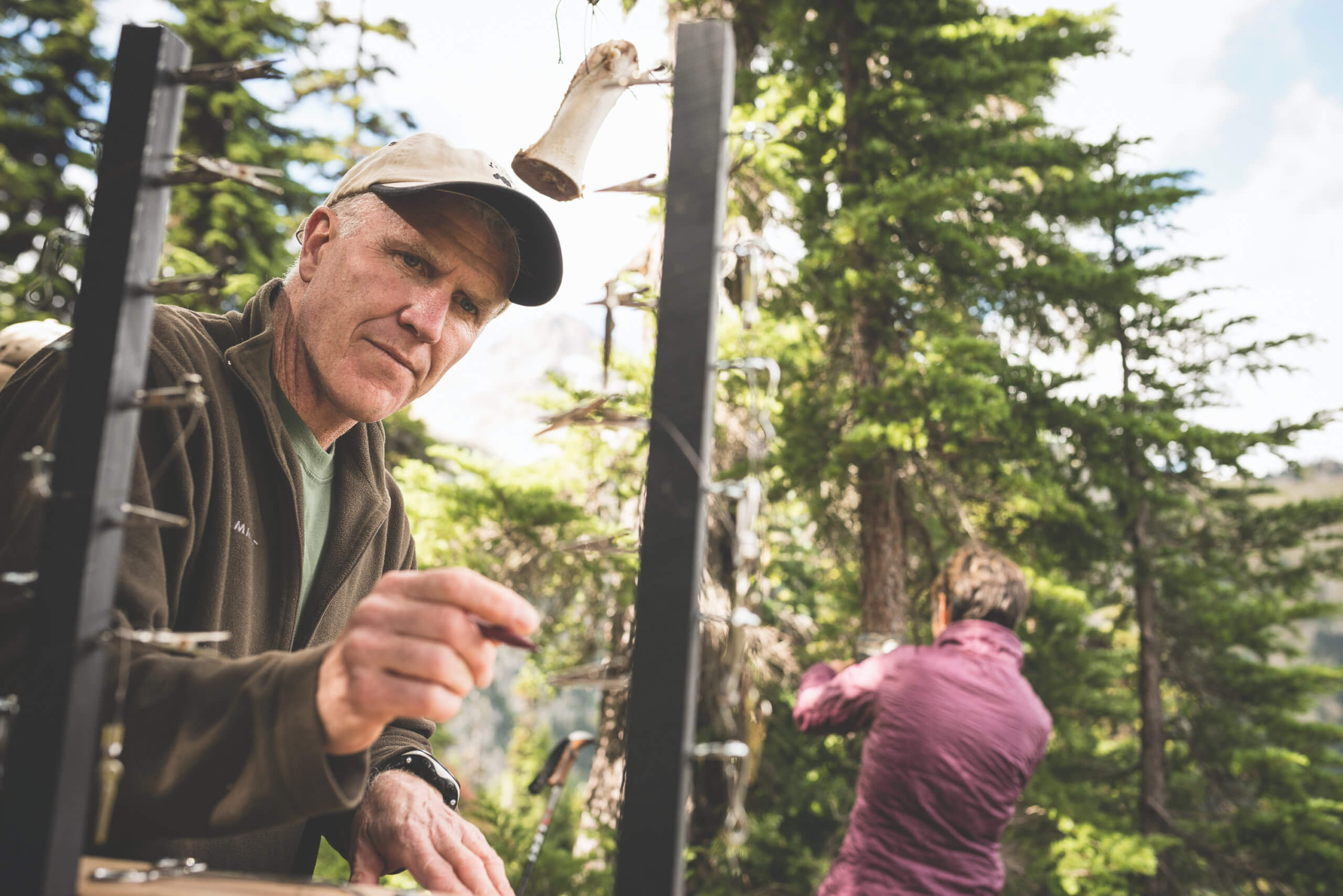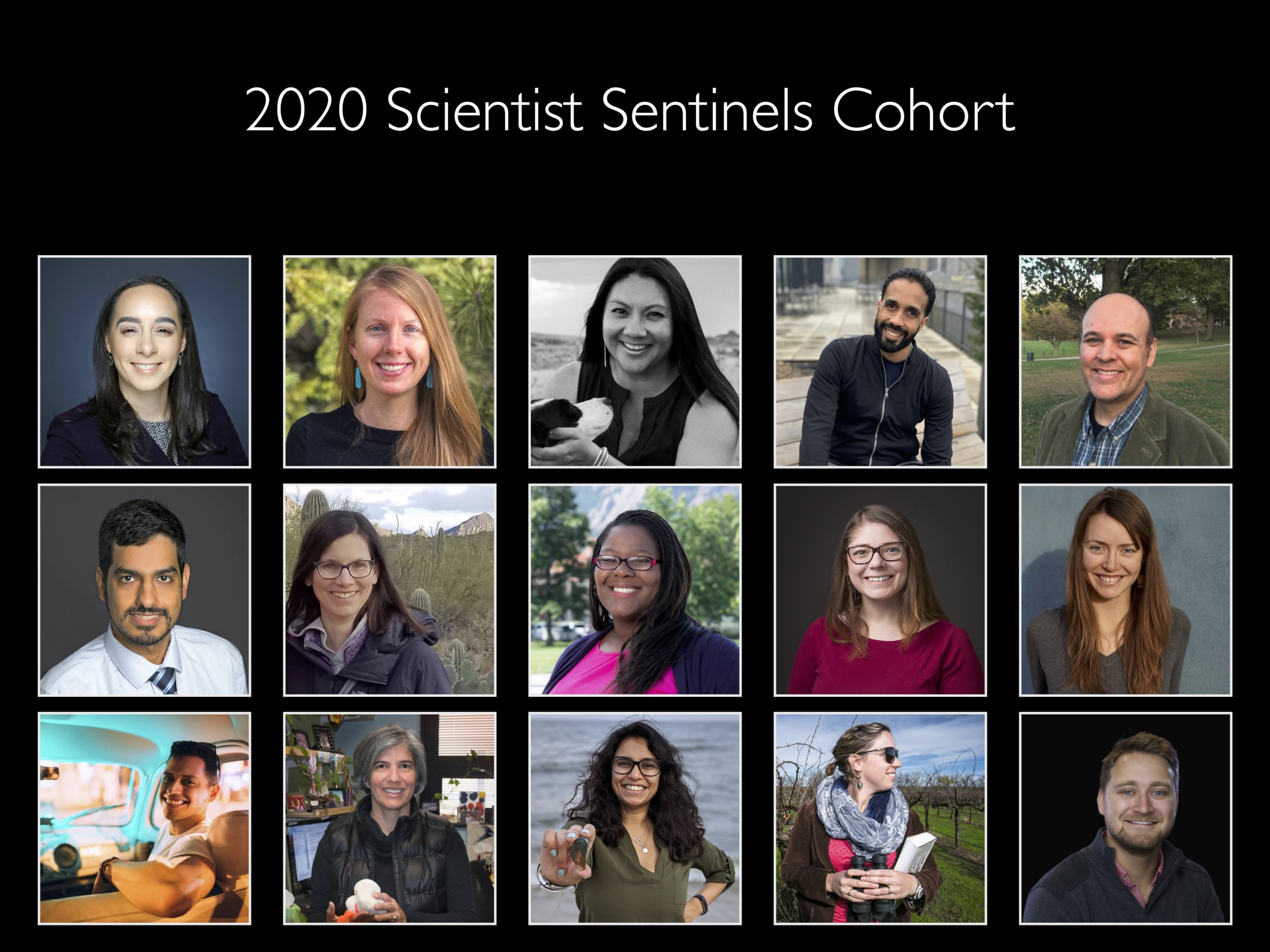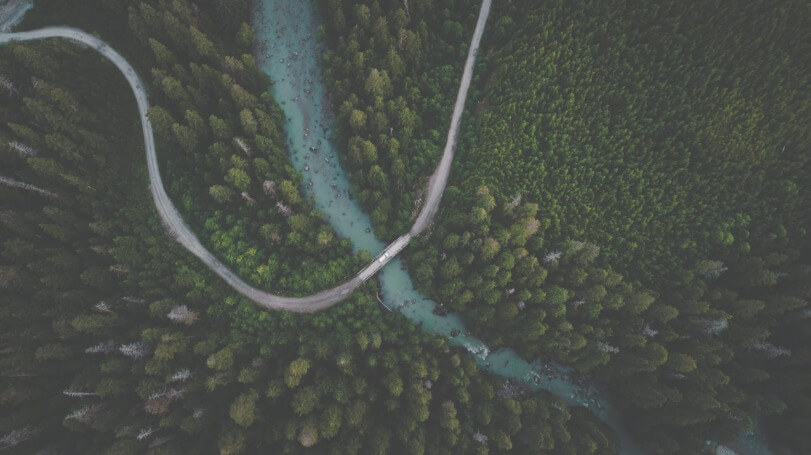Something magical happened at the first training for the Wilburforce Fellowship in Conservation Science two weeks ago. Once again, storytelling revealed its power to inform, to inspire and bring together a group of people focused on a common cause.
The fellowship originated with Dr. Amanda Stanley, Wilburforce Foundation’s Conservation Science Program Officer. When she approached COMPASS to partner with her and Wilburforce and help design the fellowship, we leapt at the chance. Our shared dream is to build a network of conservation scientists who can successfully bridge the science-to-society gap by being strong communicators, leaders, and agents of change. We not only want them to connect to their science in new ways, we want to them to connect to each other, so they can support each other in the inevitable ups and downs that come with tackling big challenges.
The scientists were chosen not just for the quality of their research, but also their leadership potential and dedication to using their science to improve conservation. The idea was to assemble a group of smart, dedicated people with a range of experiences, ages, home institutions and places they worked in the West. It was a risk in some ways. Would such a diversity of scientists bond as a group?
Each scientist came to the 6-day workshop in Seattle with a goal to pursue over the course of a year. (See the change chart – a tool we developed to help them define their goal and begin to plan their actions.)
The first evening Amanda launched the workshop by outlining the vision that answered the fundamental questions: “Why this? Why now? Why you?” We told stories that demonstrated the intrinsic link between communications and leadership. The next day, using the change chart, each Fellow shared their goal with the group, posted it on the wall for feedback, and then rolled up their sleeves to begin mapping out a plan of action.
Dr. Chad English, former Director of Science Policy Outreach, introduced “The change you want to make and how to get there,” a process for their theories of change and frameworks for thinking about various roles a scientist can play to achieve different goals.
Barefoot Thinking, a talented duo from the United Kingdom, helped the fellows brainstorm and apply new strategic thinking tools to their individual theories of change. The fellows worked in small groups offering each other feedback, suggestions, and connections.
Next, a team of journalists (David Malakoff of Science, freelance writer Michelle Nijhuis, Jim Handman, senior producer of Canadian Broadcasting Corporation’s science radio show Quirks & Quarks, and Jeff Burnside, Seattle KOMO TV Investigative Reporter and president of the Society of Environmental Journalists) provided a direct, no-holds-barred approach to helping the scientists understand what it takes to distill the essence and relevance of their work.
The workshop helped the scientists learn how to use new skills and share existing ones, such as social media savvy. Our social media expert Liz Neeley gave a dazzling overview of the power and potential of social media, whetting their appetites for more. They learned the importance of strategic planning, network building, simplifying complexity and delivering a clear message designed for different audiences and social contexts. We touched on public perceptions of scientists, including the work by Princeton researcher Susan Fiske that scientists are viewed as “cold but competent.”
All were important building blocks to what came next. One evening, after two intensive days with the journalists thinking about their messages, the scientists gathered in a circle, and started telling their personal stories and why they cared.
One scientist explained how he was brought up short when a rancher pointed at a patch of grass and asked him, “What’s that?” The scientist squinted, and then relieved he actually knew, spewed out the Latin name: Sporobolus cryptandrus, or sand dropseed. “Nope,” said the rancher, “that’s my son’s college fund.” Once they could see this grass through each other’s eyes, they forged a partnership that endures to this day that protects the grassland critical to the survival of wildlife as well as cows, and also a promise of future income that can pay for a child’s education.
One after another the scientists revealed something about themselves and their work – and the real heart of the matter. Each story left us all – including the journalists – laughing, crying or both.
When I first started coaching scientists on their communication skills, there was much concern that revealing one’s passion for what you studied was, well, unscientific. It was something to be avoided. Over the years, I’ve found time and again that the scientists willing to reveal a part of themselves are, by far, the most effective communicators. I have witnessed the power of scientists to inform and persuade if they reveal their passion, their motivation, and openly connect their heart to their science. It’s not only the “What?” but the “Why?”: Why do you study what you do? Why do you care? Why does it matter to the rest of us?
In the end, it was the stories, vivid tales told from the heart that brought together a disparate group of 20 scientists, ranging in age and focus, and melded them into a community of conservation researchers. They left the workshop with a renewed commitment to their challenges and fresh hope that they could make a difference. The stories were the bond. Or as one scientist put it, storytelling had the power to bring “my soul and my science together”.
After the training, one scientist wrote on her personal blog:
“…by the end of the week we had been put through the gauntlet where we had to do mock interviews with the journalists. Afterwards, we told stories to unwind. I listened and felt a kinship and closeness with these dedicated and inspiring scientists, as I heard stories of death, love, and redemption, interwoven with a love of wildlife and wild places.
Empowered by my week with these amazing scientists (…) I will stand at the brink and try to find my voice in the world and hope that it will find the voices of the other fellows in my circle. Together we will be a call to action. I hope that we will give voice to the caribou, alpine meadows, California condor, martens and forests and that these voices will halt climate change, help to preserve beautiful places, and create a world for our children where grizzlies roam and salmon swim.”
I am convinced that if scientists want to win the hearts and the minds of the public, we have to be forthcoming with our own.



